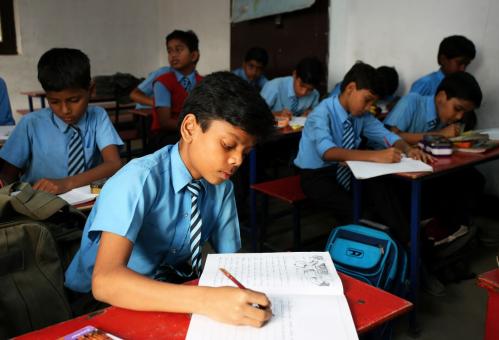Afghanistan’s ban on girls’ secondary education (O’Donnell, 2022) highlights the limitations of the “out-of-school children” (OOSC) indicator1 in capturing the complexities of educational access and exclusion. While Afghanistan represents an extreme case, the limitations of the OOSC indicator are globally relevant. Reliance on narrow indicators like OOSC provides inadequate insights to address educational exclusion and limits policymakers’ ability to draw upon the multiple pathways of learning opportunities within their educational ecosystems to meet the needs of their student population (Chiaha & Nane-Ejeh, 2014; Darling-Hammond, 1992; Hāk et al., 2016; Oakes, 1989).
Using Afghanistan as a case study, this policy brief advocates for replacing the OOSC indicator with a more inclusive out-of-education children (OOEC) indicator that incorporates formal, informal, and non-formal educational pathways. It is designed for policymakers, educators, and researchers seeking to transform education systems to ensure they are relevant to local needs and respond to global challenges.
The OOSC indicator focuses solely on formal school enrollment and fails to account for the broader geopolitical, cultural, and social realities driving educational exclusion. This narrow approach privileges formal schooling as the sole legitimate educational pathway and implicitly delegitimizes alternative and indigenous systems like madrasas, community-based programs, or the growing technology-based systems. In communities where formal schooling is viewed as a tool of foreign influence or cultural imposition, such biases exacerbate long-standing sociocultural and geopolitical tensions surrounding education.
Transitioning to an OOEC indicator addresses the limitations of the OOSC indicator by redefining education as an activity rather than solely as attendance in formal schooling. This shift in the indicator, while it may seem small, is significant because, as the saying goes, “What gets measured gets managed” (Burekli, 2019). If we only measure school attendance, we will focus solely on that one institution and overlook the multiple pathways and educational actors that could collaborate to tackle the challenge of educational exclusion in each local context.
Unless we evolve our perspective from an institutional lens to one that sees education as an interconnected ecosystem with multiple complementary pathways, we will be unable to meet the diverse needs of learners and prepare them for the growing global challenges. Additionally, we will continue to fall short of responding to the call to transform our education systems (United Nations, 2023). This transformation requires rethinking how we define the purposes, places, and avenues of education and how we measure education exclusion.
As the world faces more complex and interconnected challenges, there are increasing calls to reimagine education to address these challenges. As an educational community – policymakers, educators, and researchers – we must reevaluate how we understand educational access and consider cultural differences in educational pathways, the need to master specific competencies that are both locally and globally relevant for students and the growing importance of virtual learning environments, including those powered by artificial intelligence (Kearney et al., 2019b; Kearney et al., 2022; Winthrop & Sengeh, 2022).
The OOSC relies on a single unidimensional data source and neglects alternative pathways and contextual factors that shape access to education and the broader learning landscape. Simplistic quantitative metrics, such as the OOSC indicator, may seem attractive due to their perceived ease of data collection and interpretation. However, they do not capture the complexity of education exclusion that can inform meaningful system redesign, reform, and transformation.
This shift from OOSC to OOEC offers three key advantages. First, it broadens our perspective on addressing the educational challenges of a complex, interconnected world. Second, it fosters transformation by focusing on sustainable, culturally relevant solutions that tackle the root causes of exclusion. Finally, it encourages us to reimagine education as an interconnected ecosystem composed of multiple pathways and actors who can collaborate to prepare students better to thrive as individuals, contribute to their society, and support their families and communities. This shift can catalyze local and global discussions on the purposes and pathways of meaningful education and refocus education on what truly matters to children, their families, and communities. Collaborative research, like the initiative that the SPARKS project at the Brookings Institution is leading, can play a crucial role in driving these discussions.
-
Footnotes
- The OOSC indicator is designed to be a measurable variable that provides information about the scale, characteristics, and factors related to school-aged children (ages 6-17) not attending formal schools. Its purpose is to monitor the progress of children’s enrollment in schools and inform policy and educational programming to reduce educational exclusion (UNESCO Institute for Statistics).
The Brookings Institution is committed to quality, independence, and impact.
We are supported by a diverse array of funders. In line with our values and policies, each Brookings publication represents the sole views of its author(s).






